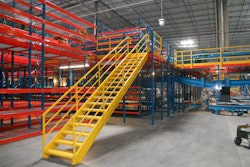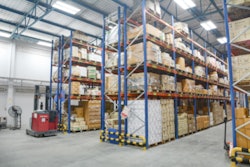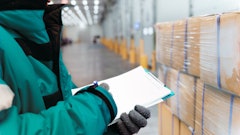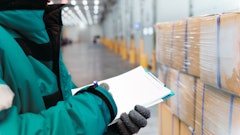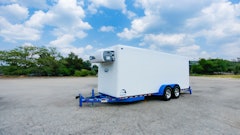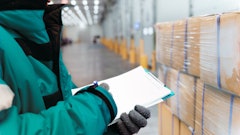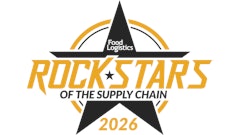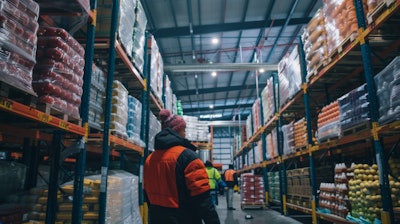
The events of the past five years have delivered a stark reminder to the governments and consumers of developed nations that extreme situations can put at risk even the most dependable food supply.
In just a few short years, the global food supply chain has grappled with the impacts of the COVID-19 pandemic, outbreaks of war, changes to trade agreements, port and shipping route disruptions, extreme weather, volatile energy prices and labor shortages. All this in the context of the drive for decarbonization and global economic uncertainty. The U.S. food supply chain has coped with these many challenges incredibly well, drawing on experienced people, smart technologies, strong partnerships and innovative thinking to keep serving the nation’s, and globe’s, needs.
The resilience of food supply chains is now being given a greater level of consideration in discussions around government policy than was typical pre-2020. It is a topic that will only climb the agenda over the coming decade. Every nation in the world faces the challenges of fast-changing populations and climatic changes. In both developed and emerging economies, temperature-controlled logistics will be absolutely central to improving food supply chain resilience.
An effective and efficient cold chain facilitates the availability of safe, high-quality, affordable food. It vastly improves choice and nutrition, helps tackle hunger, enables far better returns for farmers and producers, and averts the desperately harmful problem of food waste. Building cold chains and making sure they remain effective, efficient and resilient in times of crisis and disruption is fundamental to feeding both developed and emerging economy nations.
Over the past 20 years, consumer preferences, retail services and international trade have evolved. As a result, demand for cold storage has increased significantly. In the United States, the industry has responded accordingly, not only investing in new and expanded facilities but also reinventing storage capabilities with space-efficient pallet systems, automation, and energy-saving designs. Increasing demand is set to continue in the United States and around the world.
The Global Cold Chain Alliance’s Top 25 list of third-party cold chain warehouse capacity demonstrates two startling trends. The first is the rapid growth in the volume of cold storage. This list, which highlights the largest third-party specialists, has grown by 40% (or 2 billion cubic feet) in the five years from 2020-2025. The second is the emergence of a small number of global companies growing through rapid expansion and acquisition of regional players. In fact, 2025 started with two major global cold chain specialist companies listed on the NASDAQ stock exchange.
It seems that the growth of the largest players is not holding back the investment and growth opportunities for the small and regional players that continue to find opportunities to meet the growing demand for cold chain at all levels. This staggering influx of investment is causing a dramatic realignment of the marketplace and significant growth opportunities for businesses across the global cold chain.
It is crucial for future food supply chain resilience that the U.S. policy environment encourages and facilitates continued investment in cold storage facilities. This includes more support for on-site generation of renewable energy and recognition of these essential facilities as a priority for continued supply in times of energy shortage.
Investment in the continued, sustainable advancement of the transportation of refrigerated food through shipping, air cargo and via roads and rail, is equally central to future food supply chain resilience at global, regional and local levels. The temperature-controlled transportation network is vulnerable to a range of disruptions, and in future years, expect more frequent and severe incidences of extreme weather. Pressure to reduce emissions in transportation, including cold chain, is a complex challenge that demands careful and realistic policy interventions that must be made with full understanding of the trade-offs between efficient, reliable, logistics and restrictive policies such as stringent targets or equipment bans.
In today’s inter-connected world, food supply chain resilience cannot, and should not, be achieved by one nation or one region alone. GCCA continues to work for the progression of the FRIDGE (Fortifying Refrigeration Infrastructure and Developing Global Exports) Act. This would add authority to the Trade Title of the Farm Bill to focus on strengthening the global food supply chain for refrigerated and frozen products. It would boost the ability of emerging markets to safely and efficiently receive high quality U.S. perishable commodities, creating new trade opportunities, improving food security and nutrition, and reducing waste due to food loss.
The industry must also continue to champion opportunities to remove the frictions that hold up supply chain movements. Too much of today’s global food trade is held up by antiquated processes and arbitrary enforcement rules.
2024 closed out with a change to the so-called “50-mile rule,” which mandated that no food logistics facility could be designated as an inspection house for imported food, unless it was located within 50 miles of a port of entry. In today’s world of digital traceability and auditable supply chains, this type of restriction is not just an unnecessary cause of bottlenecks at the ports, but also a barrier to investment and opportunity for logistics businesses. Facilitations like this go a long way to making food supply chains more reliable, efficient, and secure.
The onus does not, of course, rest with government alone to ensure the U.S. cold chain is in the position to fulfil its crucial role. As well as investing in facilities, equipment, emerging technologies and energy efficiency, the industry is also investing in its people and the skills that cold chain businesses will need in the future. The cold chain offers a broad range of interesting, varied and future-facing roles, and as an industry, we must do more to promote temperature-controlled logistics as a fulfilling career choice with great opportunities for training and progression.






